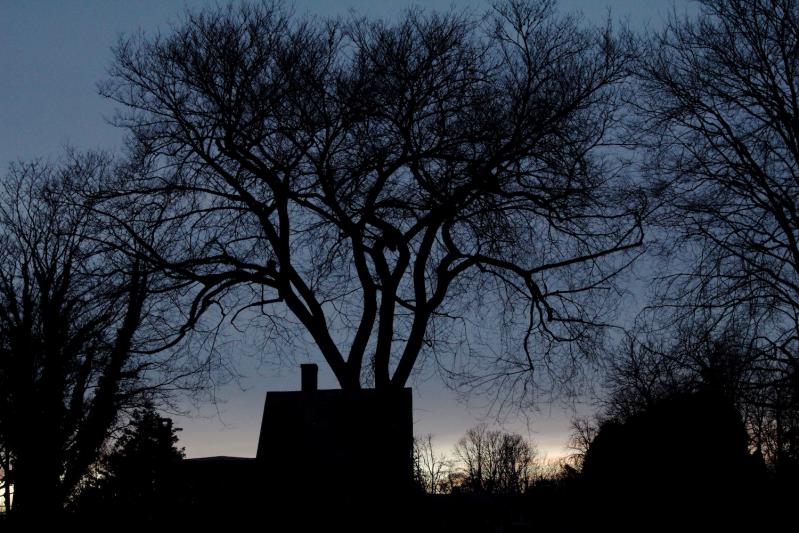If passing a tree protection ordinance in the Town of East Hampton is set to be a war between environmentalists and developers, Jaine Mehring’s presentation before the town board on Tuesday was the first salvo.
Speaking as a member of the town’s sustainability committee, she hit the board with data, lots of data, tucked tightly into a 68-page PowerPoint presentation.
“We’re not here to deliver draft code,” she said. “Instead, our intent is to build a solid understanding of the purpose of T.P.O.s, how they’re structured, implemented, and to establish what we see as a compelling ‘proof of need’ for a T.P.O. in East Hampton Town.”
She succeeded.
“The board is in agreement that we want to move forward with a tree-protection ordinance,” Supervisor Kathee Burke-Gonzalez said when Ms. Mehring finished, meaning the conversation will continue.
The proposed ordinance would apply to both public and private land, and include replanting standards. Ms. Mehring convinced the board that not only are there myriad threats to trees, from both people and climate change, but also material gaps in the town’s current code, allowing for the removal of trees with scant consequence.
“First, there is nothing in place that requires review or precludes anyone from cutting down individual or groups of valuable trees,” she said. “Two, the ability to hold violators accountable to current codes related to clearing and trees appears to be slim to none. We hear mounting concern among residents about some who appear to exploit or evade what code protections we do have, and a sense that some just get away with it, without proper accountability.”
Mature trees are frequently removed to make way for “amenities,” Ms. Mehring said, even when there are other alternatives. Often, they’re being replaced by non-native walls of evergreens that have limited ecological value.
According to her presentation, published on the town’s website and full of links, there are approximately 26 square miles of protected open space in the town, but 44 square miles is subject to development. The sustainability committee estimates that 30 percent of the town’s nearly 19,000 residential lots fall into the “pre-existing non-conforming clearing” zone, meaning that 100 percent of the lot could be cleared without consequence.
Ms. Mehring said there was a “constant trend among sales listings” that push the 100-percent clearing status as “a big plus.” She showed a slide from a local real estate advertisement showing a bird’s-eye view of a wooded parcel juxtaposed with the same parcel denuded of its trees.
“All in, we see the pressing need to enhance our town code in a way that provides the utmost protection of native ecologically valuable and culturally significant trees, and ensures species diversity across all property,” she said. “We think a T.P.O. is the best way to address these imperatives.”
Councilman Ian Calder-Piedmonte, noting that it was a feel-good sort of conversation, which probably wouldn’t find many advocating for tree removal, nonetheless played devil’s advocate.
“We also want to encourage water quality,” he said, referencing a point Ms. Mehring made about the larger clearing areas needed for I/A septic systems. “How do we strike the balance so that we don’t have two separate pieces of legislation that contradict each other and make it difficult to get things done?”
“Clearing is okay for particular reasons,” he added. “The specifics of how we strike that balance is going to be really important. I think this is exactly the kind of conversation that we as a town should have.”
Board members agreed that they could start immediately to protect trees in the town’s rights of way, because they’re on public land. Supervisor Burke-Gonzalez suggested an interim social media campaign highlighting the benefits of trees and sustainable landscaping practices.
“Your yard doesn’t have to be all hydrangeas,” she said.
Ms. Mehring said that while prohibitions and restrictions are one part of the equation, it’s equally important to create incentives for good tree and land management practices among property owners, builders, and landscapers.
She also put tree-protection ordinances in historical context. For example, she said, in 1984, there were only 100 communities nationwide with tree protection laws. By 2017, there were over 3,400. New York State passed a law nearly 50 years ago allowing municipalities to protect their trees, and nearly 70 per cent of municipalities have since done so. In other words, East Hampton Town is behind the trend and in the minority.
Ms. Mehring promised to return with an analysis of tree-protection ordinances in 30 other municipalities, summarizing and comparing the major elements of each, including nascent code in Southampton Town.




